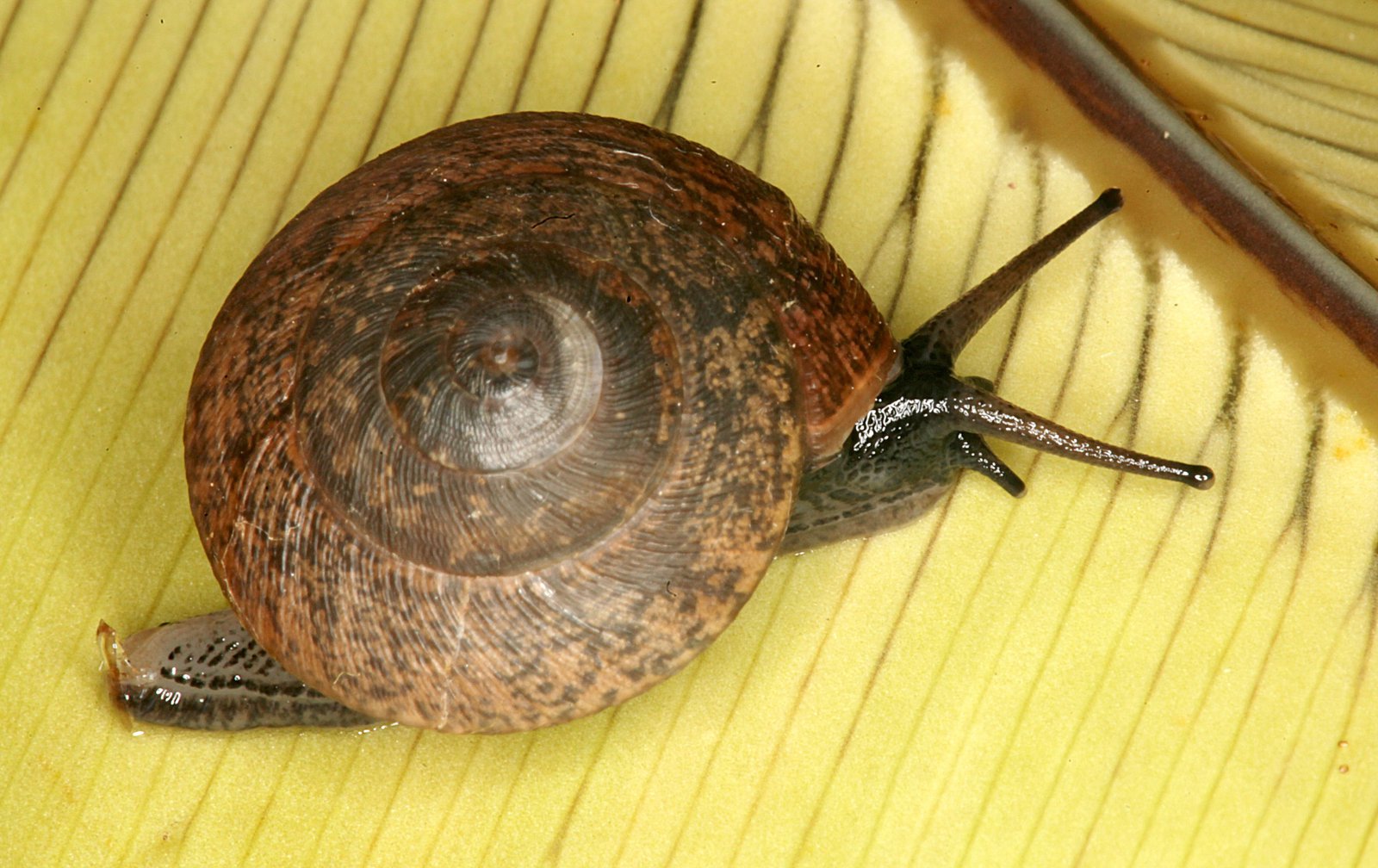Homecoming! A journey from stress to success for Norfolk Island snails
It’s been five years since Norfolk Island local, Mark Scott, showed Malacologists from the Australian Museum a small living population of a snail species previously feared to be extinct. Now, after a successful ex situ captive breeding program at Taronga Zoo founded with just 46 snails, scientists are bringing their descendants back home to Norfolk Island.
Advena campbellii, or Campbell’s keeled glass-snail, is likely to have once been widespread on Norfolk Island. The current population is limited to a single catchment area in the Norfolk Island National Park (NINP), and this makes it vulnerable to extinction. We are planning to introduce zoo-bred snails into three additional sites in the National Park, which, if successful, would greatly increase this species’ robustness and long-term chances of survival in the wild.

Advena campbellii or Campbell’s keeled glass-snail.
Image: Adnan Moussalli© Museums Victoria
There have been very few land snail introductions worldwide, and this is the first of its kind in Australia. We have interviewed snail translocation experts from around the world to develop a detailed plan. But we also need to acknowledge that there is a risk of failure because each snail species is unique and they may differ in their response to translocations. We hope to mitigate this with in-depth knowledge of the snails built up over the past five years, detailed planning, a strong team with varied expertise (from the NINP, Taronga Zoo, Western Sydney University and the Australian Museum), and international advisors.
The journey to this point has not always been straightforward. For the first few years, the zoo population remained small, despite all the care of the husbandry team. However, gradually over time the team made improvements in the husbandry conditions with a very positive impact on snail health and population size. And slowly a picture has emerged: these snails are extremely sensitive to stress.
So, what stresses a snail? Well, abrupt changes to diet, excessive disturbance or handling, and transport between two different environments all seem to cause undue stress in our snails, impacting fertility and longevity. So that begs the question: how do we move hundreds of snails that are sensitive to change to a new environment, with minimal impact? I can tell you, a LOT of thought has been put into the answer!
We have elected to transport our snails in the tanks they live in, rather than repackaging for transport. We are also establishing a snail facility at the NINP headquarters where the snails will live for several weeks after their move to the island, to allow them to acclimatise. During this time a Taronga Zoo husbandry expert will slowly introduce a natural diet and monitor for signs of stress and will train the NINP staff in caring for snails and understanding their behaviour. When the snails are ready, they will be released into the wild and NINP staff and other team members will follow up with monitoring to track their progress.
We cannot remove all stress from the translocation for the snails. But on the other hand, it doesn’t make sense to leave them in the zoo when the wild population on Norfolk Island would benefit so greatly from an increase in numbers. We acknowledge that the reintroduction is a risk, but it’s a well-considered one.

The team are planning to introduce zoo-bred snails back to Norfolk Island.
Image: Tom Bannigan© Australian Museum
And just in case you were wondering: the incoming snails will not be making an appearance in veggie gardens. Norfolk Island’s native snails are primarily found in relatively undisturbed native habitat, and even if one makes its way to a garden, it won’t be munching on vegetables – the true culprits are introduced species from Europe, Asia and Africa that are common garden pests worldwide.
Watch this space for more updates, as the snails adjust to being home again!

Mark Scott, Isabel Hyman and Frank Köhler with the wild population of Advena campbellii in March 2020
Image: Adnan Moussalli© Adnan Moussalli
Authors
Dr Isabel Hyman, Research Scientist, Malacology, AMRI.
Junn Kitt Foon, PhD student, Western Sydney University; and, Research Associate, Malacology, AMRI.
Acknowledgements
We would like to thank the rest of the reintroduction team, which includes Zoe Knapps, Mel Wilson, Allie Andersen and Sam Burridge from the Norfolk Island National Park, Monique Van Sluys, Simon Brown, Tarryn Williams Clow, Sara Brice, and Frances Hulst from Taronga Zoo, Kate Umbers from Western Sydney University, and Frank Köhler from the Australian Museum. Thanks also to Sara Freeland (Norfolk Island National Park), Jennifer Steed (Taronga Zoo) and Farley Fitzgerald (Australian Museum).
More information:
- Hyman, I.T., Van Sluys, M., Foon, J.K., Macgregor, N. A., Andersen, A.H., Patel, T., Williams Clow, T., Wilson, M., Daly, A., Bennison, K., Bonson, P., Brown, S., Christian, B., Finlayson, B., Greenup, N., King, L.-U., & Köhler, F. 2024. The challenge of preventing extinctions: Lessons from managing threatened land snails on Norfolk Island. PLOS ONE. https://doi.org/10.1371/journal.pone.0314300
- Hyman, I. 2021. More than a snail’s pace: progress on Norfolk Island’s threatened snails. Australian Museum blog.
- Hyman, I. 2021. The science behind the stamps: Land snail research on Norfolk Island. Australian Museum blog.
- Hyman, I. 2020. Raised from the dead: Species assumed extinct rediscovered on Norfolk Island. Australian Museum blog.
- Hyman, I. 2020. Rare snail species found alive on Norfolk Island after 130 years. Australian Museum blog.












